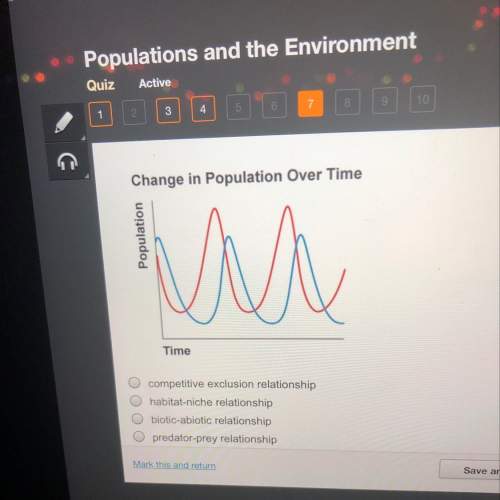
Biology, 03.07.2019 01:00 Erinkim7608
1. poison ivy is also known as rhus toxicodendron. its species is [1pt] a. toxicodendron b. ivy c. rhus d. poison 2. all organisms in the kingdoms protista, plantae, fungi, and animalia are [1pt] a. photosynthetic organisms b. multicellular organisms c. eukaryotes d. prokaryotes 3. of the following, felis leo is most closely related to [1pt] a. felis domesticus b. rana pipiens c. homo sapiens d. xenopous laevis 4. most multicellular, nucleated autotrophs that carry on photosynthesis belong to the kingdom [1pt] a. animalia b. plantae c. protista d. fungi 5. which of the following is a heterotrophic eukaryote associated with the decomposition of dead organisms. [1pt] a. protist b. herbivore c. bacterium d. omnivore 6. how do protists differ from bacteria?

Answers: 1
Another question on Biology

Biology, 21.06.2019 13:10
The meselson-stahl experiment demonstrated that dna replication is semiconservative. in the figure, semiconservative replication is illustrated by
Answers: 1

Biology, 22.06.2019 04:30
Which of the following describes a difference when gram-positive bacteria are compared to gram-negative bacteria?
Answers: 3

Biology, 22.06.2019 08:00
Which best example best demonstrates the importance of having knowledge of evolutionary relationships? a. illustration of a plant b.organ transplantation between species c. blood donation from a human d. do you need sequence of an insect.
Answers: 1

Biology, 22.06.2019 15:00
Cells must be in osmotic equilibrium with their surroundings environments because if they swell or shrink thier membranes will rupture
Answers: 1
You know the right answer?
1. poison ivy is also known as rhus toxicodendron. its species is [1pt] a. toxicodendron b. ivy c. r...
Questions

Mathematics, 15.03.2022 23:30





Mathematics, 15.03.2022 23:30





History, 15.03.2022 23:30

Social Studies, 15.03.2022 23:30



Mathematics, 15.03.2022 23:40


Mathematics, 15.03.2022 23:40


Biology, 15.03.2022 23:40




